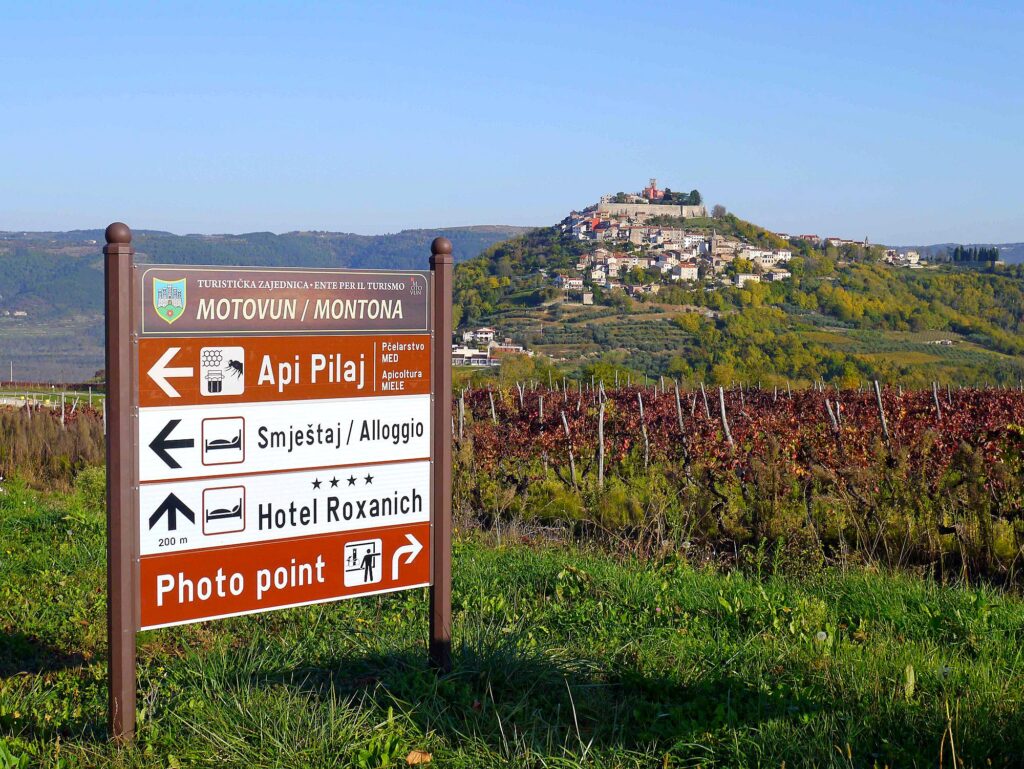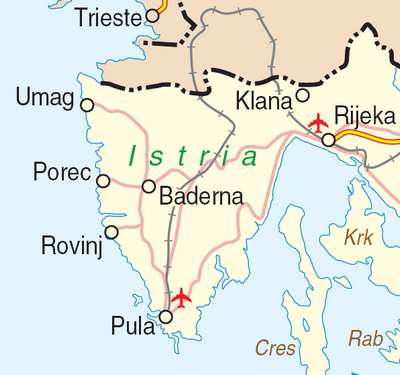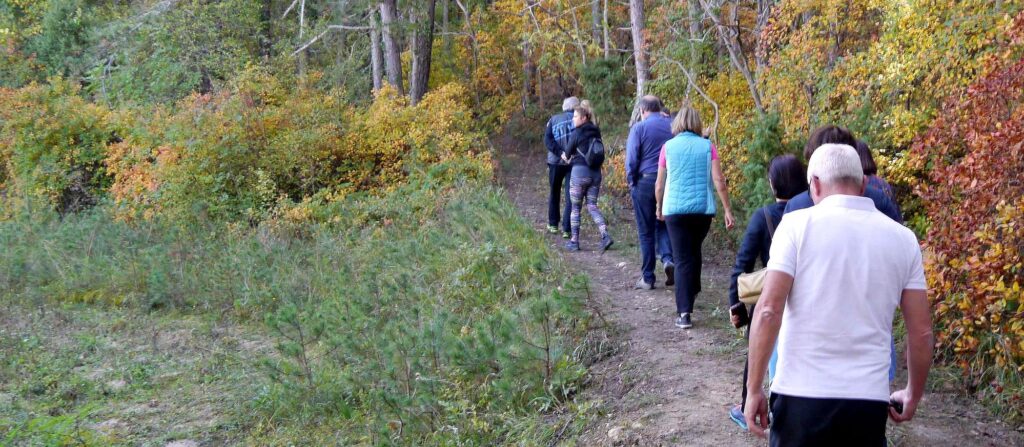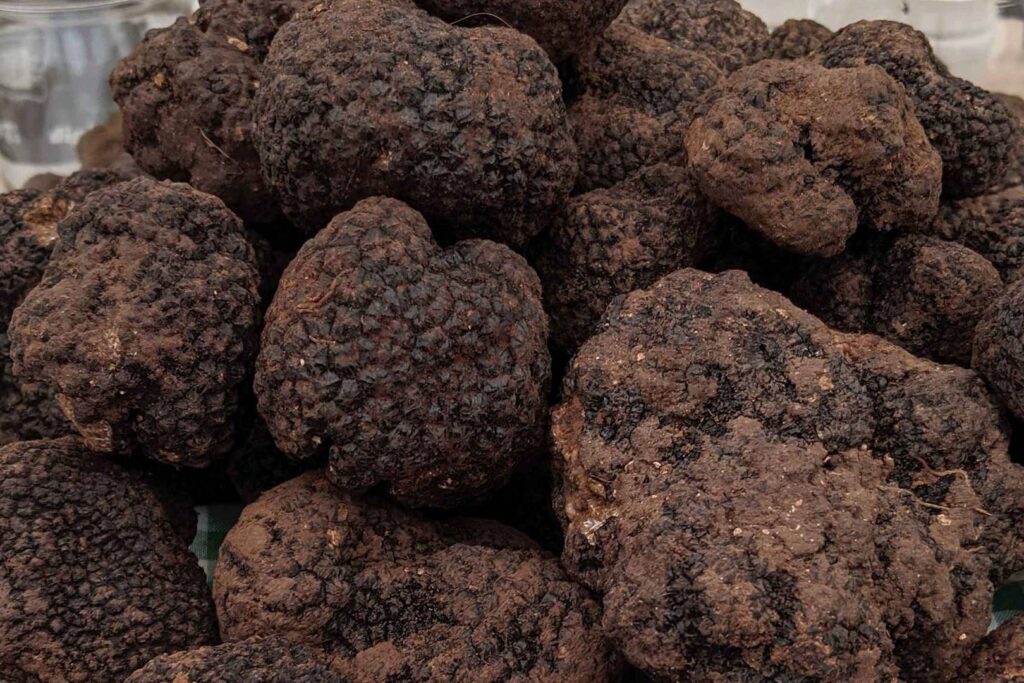
From a foodie perspective, Istria is a marvelously complicated place. Every conquering nation that’s passed through has left culinary traces behind. Long part of the Austro-Hungarian empire, then a corner of Yugoslavia, these days the region largely belongs to Croatia.

It’s the thumb-like peninsula that juts down into the Adriatic just south of the currently Italian city of Trieste and a tiny strip of Slovenia. Parts of Istria bleed into Slovenia and over the border into the Italian region of Friuli Venezia Giulia. Out of tradition and perhaps necessity, people speak a whole basket of languages.
But American food lovers need to know just one thing about Istria. Lidia Bastianich hails from Istria, which speaks volumes about the food. Just before the pandemic, we spent a delicious week in Istria in October. Tourist season was waning, but truffle season was just getting into high gear.
Yes, truffles. As many as a dozen different species grow in the hardwood mountain forests of interior Istria. We were early for white truffles (so-called Alba truffles). But black truffle season had begun. We booked a trip into the woods with Miroslav Kortiga and his truffle dogs.

ON THE TRAIL OF MOTOVUN TRUFFLES
We were hardly the only ones. Miro and his wife Mirjana run a bustling tour and tasting business at the edge of the medieval mountain town on Motovun. It’s called Miro Tartufi (Kanal 27, Motovun; +385 52 681 724 office, +385 91 523 0321 for Mirjana’s cell; miro-tartufi.com). The full-on truffle experience includes a hunt with Miro followed by a multi-course truffle meal prepared by Mirjana in the couple’s delicatessen home. (The Kortigas also sell truffle and truffle products.) Cost is around 50€ per person.
The sixteen people in our group hailed from Switzerland, Italy, Austria, the U.S., and Singapore. Once we arrived at the 15-acre (6-hectare) patch of the Motovun oak forest where Miro has exclusive truffle-hunting rights, he provided some brief background. Truffles were first discovered in the forest in the winter of 1956-57. Miro normally harvests 20-100 grams per day; his biggest find was a 300-gram white truffle. He and Mirjana eat truffles at home only if their son and daughter—or good friends—are visiting.
He released the dogs from the trunk of his car, and they burst out with joy. ‶We use dogs because their sense of smell is eight and a half thousand times better than humans’,″ he explained. (English was the common language for the group, fortunately for us.)

STARTING FROM SCRATCH
Soon we were all following Miro and the dogs up a trail where the dogs snuffled at every clump of roots or exposed patch of dirt. When they became excited and started digging vigorously, Miro would step in and push them aside. He would rake through the dirt with a small spade, often exposing a tiny red summer truffle. He would let the dogs have it, since summer truffles lack the delicious pungency of black or white truffles.

After about 45 minutes, we went returned to Miro Tartufi with two black truffles weighing around 30 grams. It was a reasonable find for a brief sojourn. Miro explained that the fresh truffles would keep for a week to 10 days.
That probably explains the array of truffle products that have been developed over the years. Truffle oil, we have learned from sad experience elsewhere, is more a laboratory product than a true essence of the underground mushroom. But entrepreneurial sorts have discovered that storing white truffles in rice for three weeks, for example, gives the rice a distinct flavor. The truffle gives up about 30 percent of its weight in humidity, which the rice absorbs along with the scent. The truffle left behind is shriveled and ugly, but it’s still tasty when shaved finely into other dishes.
Those other dishes—and many more made with fresh truffles—would be our next adventure.

